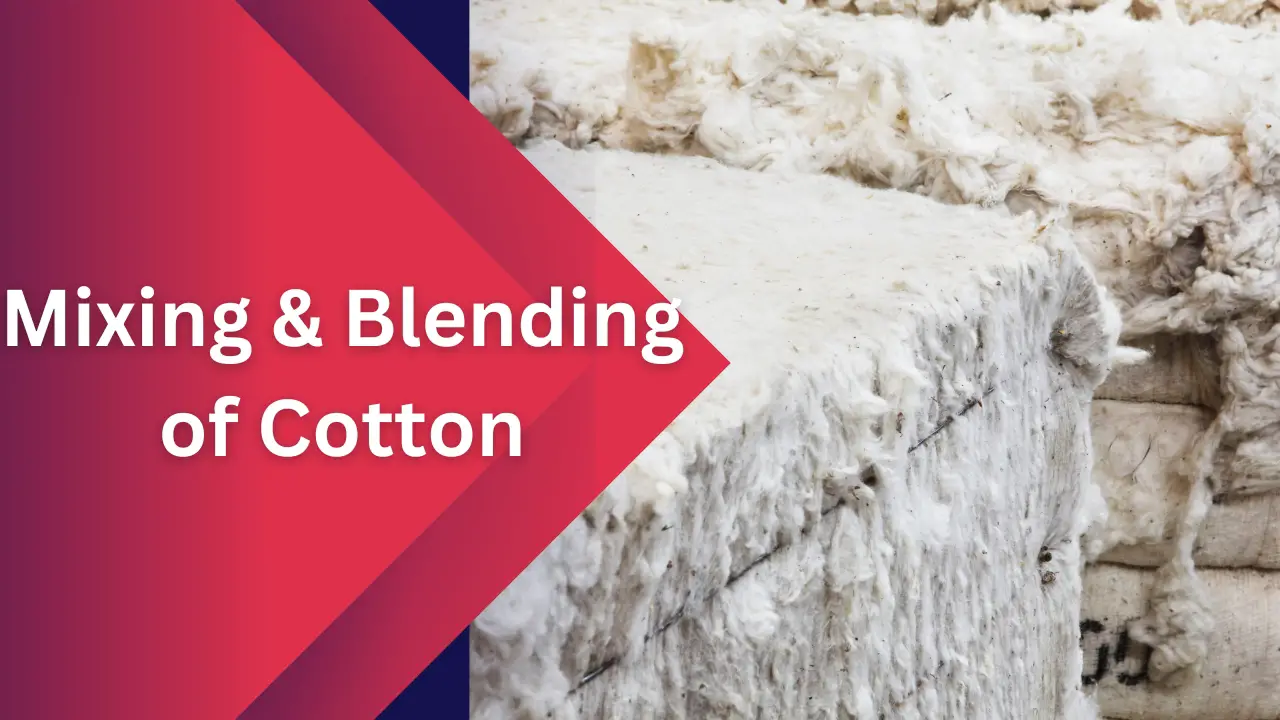What is Mixing?
Mixing : When some fibers of a similar origin or grade are mixed together for a product, it is called mixing.
Example: 60% of 1 and 1/8 inch staple of cotton + 40% of 1 and 1/4 inch staple length cotton. Mixing is intended for the development of cost or quality of the mid-product- the yarn.
What is Blending?
Blending: Taking different fibers of the same or different grade and origin and mixing them into one product is called blending. Garments are blended in order to improve their physical properties.
Example: 60% cotton fiber + 40% polyester fiber
Objects/ Most Importance of Mixing and Blending of Cotton Fiber
Mixing or blending play important role in short staple spinning in term of quality and end-use . The importance of mixing or blending is discussed here in short:
1. Optimization of end product profile:
There are many blends of natural and man-made fibers on the market today in response to consumer demands for easy-care clothing, increased comfort, environmental protection, and fashion. In addition to two-component blends (PC or CVC), multi-component blends and special effects blends are becoming more popular. For technical textiles, yarns can be spun from blends composed of up to five components (e.g., Kevlar, Nomex, PANOX, Wool, and PVC), with blend percentages as low as 5% for specific components. It is also essential that the blending process produces a uniform product. Thus, blending plays a vital role in product profiling.
2. Equalization of raw material quality:
It is common for fiber properties to vary significantly between bales of the same fiber type or grade and within a bale as well. The variations will be more significant in natural fibers than in man-made fibers. Therefore, blending fibers within and between bales is imperative to obtain consistent yarn properties, such as mechanical properties, minimum thickness variation along the yarn length, and uniform count and optical properties for dyeing. A mélange yarn is also made from blended dyed fibers, where shade consistency is required. As a result, different types of raw materials are equalized and leveled to produce yarns of the required quality.
3. Minimization of raw material cost:
In today’s highly competitive global textile market, fiber cost, and product quality play a crucial role in determining yarn cost. Low fiber costs can be achieved without causing unacceptable reductions in yarn quality by using the technical skill. When choosing the percentages of the different components, one needs to understand the effect of fiber properties on process performance and yarn properties to ensure that the mixing of different grades produces a uniform or equalized product by understanding how fiber properties affect process performance and yarn properties. The raw material cost is minimized by mixing and blending cotton consignments at different times and at different prices.
4. Optimization of yarn profile:
A yarn profile combines a yarn quality profile and a yarn physical profile. A quality profile measures the yarn’s evenness, such as thick, thin, and neps, while a physical profile measures the surface characteristics (softness). The profiles are optimized by mixing and blending different grades of raw cotton.
5. Maintaining uniform quality over long period:
When quality is uniform over a long period, it brings positive results in different ways, such as process control, quality control, and customer satisfaction. It is possible by mixing and blending processes.
6. To improve process performance:
Better process performance can be achieved by using fibers with different physical properties. we mixed different fiber each other or different grade of cotton to improve process performance of spinning.
7. Utilization of Spinnable waste:
In the blow room, spinnable waste is mixed with virgin cotton at the optimal level to utilize it as raw material. So that it minimize the cost.
References
- Chowdhury, M. F. (2016). Manual of Short Staple Spinning . Dhaka: Granthanir Prokashoni.
- Hossain, M. S. (2014). Introduction to Textile Engineering. Dhaka: Books Fair Publications.
- Kadolph, S. J. (2009). Textiles. New Delhi: Dorling Kindersley.
- Siddique, D. H. (n.d.). Natural Fibers. Dhaka.







Major thankies for the blog.Really thank you! Fantastic.
I really enjoy the post.Really thank you! Awesome.
I loved your article.
I loved your article.Much thanks again. Much obliged.